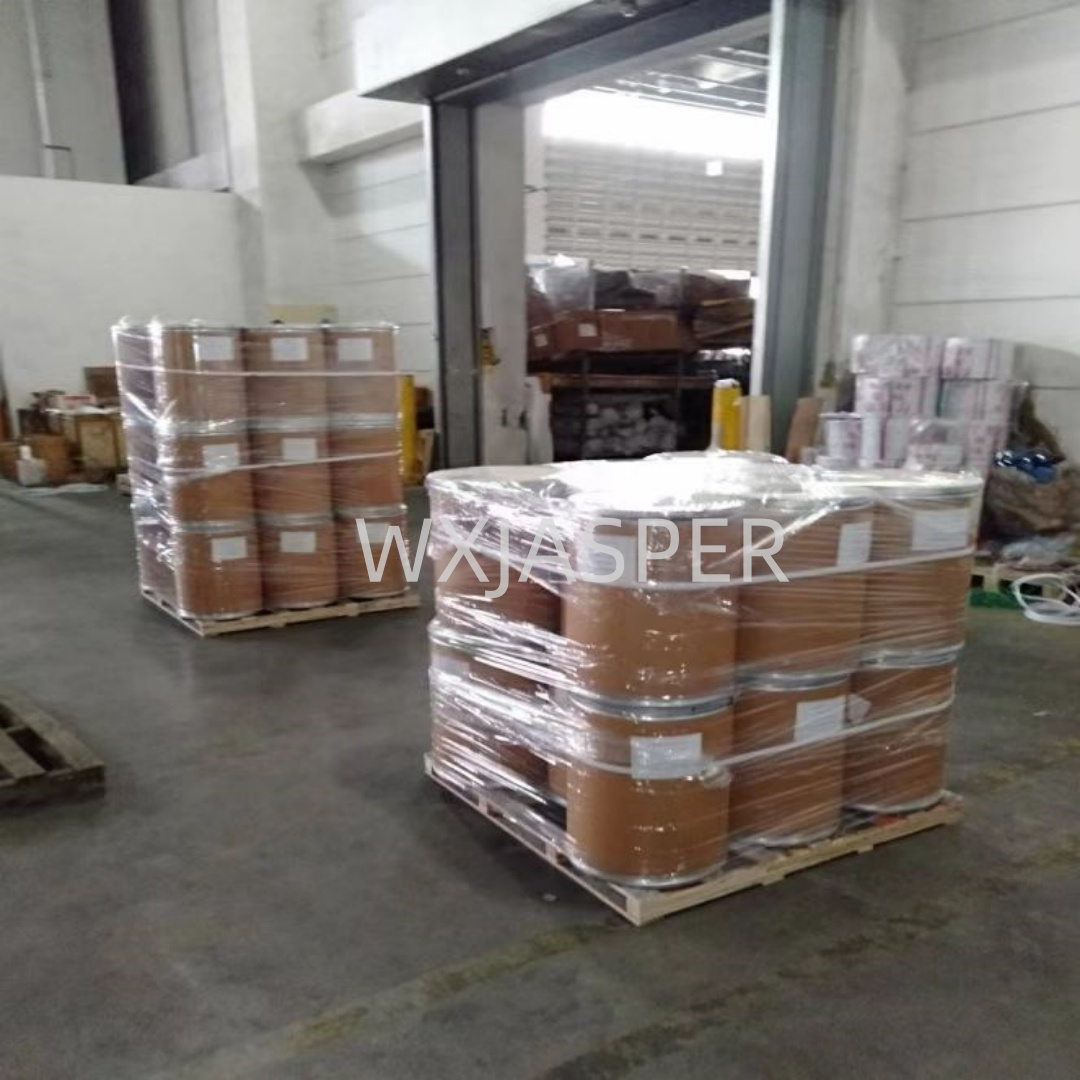Product Details
CasNo: 38963-94-9
MF: C16H22O7
Appearance: powder
Delivery Time: 15 days
Packing: 25kg/drum
Purity: 99%
1. Basic Information
- Chinese Name: 树莓苷;覆盆子酮葡萄糖苷
- English Name: Raspberry Ketone Glucoside (RKG); p-Hydroxybenzylacetone Glucoside
- INCI Name: Raspberry Ketone Glucoside
- CAS Number: 38963-94-9
- Molecular Formula: C15H20O7
- Molecular Weight: 312.32
- Chemical Structure: It is formed by the glycosidic bond linkage between "raspberry ketone" (p-hydroxybenzylacetone, the characteristic active component of raspberries) and glucose. This glycosylated structure significantly improves stability and water solubility while retaining whitening activity.
2. Physicochemical Properties
- Appearance: White to off-white fine crystalline powder, odorless or slightly having a faint aroma of raspberry fruits, with no visible impurities.
- Solubility: Easily soluble in water (solubility approximately 20g/L at 25℃), propylene glycol, and glycerin; slightly soluble in ethanol; insoluble in organic solvents such as petroleum ether and chloroform. It disperses easily in aqueous or water-oil mixed cosmetic systems without precipitation or stratification.
- Stability: Possesses excellent chemical stability. Within the pH range of 4.0-7.0 (suitable for most skincare product systems), it can withstand temperatures ≤60℃ and is resistant to light and oxidation. It is not prone to discoloration or decomposition during long-term storage (under light-proof and sealed conditions). Avoid contact with strongly acidic (pH<3.0), strongly alkaline (pH>8.0) environments, or heavy metal ions (e.g., Fe³⁺, Cu²⁺).
- Safety: Its natural origin endows it with extremely low irritation. According to skin irritation tests (human patch tests), there is no redness or stinging reaction on sensitive skin when added at a concentration of 0.5%-2.0%. It complies with the European Union’s cosmetic ingredient safety standards (SCCS certification).
3. Quality Indicators
|
Test Item
|
Specification
|
|
Assay (HPLC Method)
|
≥98.0% (calculated on dried basis)
|
|
Loss on Drying
|
≤0.5% (constant temperature drying at 105℃ for 2 hours)
|
|
Residue on Ignition
|
≤0.1% (ignited to constant weight)
|
|
Free Raspberry Ketone
|
≤0.1% (to avoid irritation)
|
|
Heavy Metals (as Pb)
|
≤5ppm
|
|
Arsenic (As)
|
≤1ppm
|
|
Microbiological Indicators
|
Total bacterial count ≤100CFU/g; no pathogenic bacteria such as Escherichia coli, Staphylococcus aureus, or Pseudomonas aeruginosa
|
4. Mechanism of Action & Core Efficacy
Raspberry Ketone Glucoside achieves mild whitening through multiple pathways and also has soothing and repairing effects. The specific mechanisms are as follows:
- Inhibiting Melanin Production: It selectively inhibits the activity of tyrosinase (the key rate-limiting enzyme in melanin synthesis), blocks the conversion of tyrosine to dopa and dopaquinone, and reduces melanin production at the source. Its inhibitory effect on tyrosinase is "targeted" and does not affect the activity of other skin metabolic enzymes.
- Reducing Formed Melanin: It can reduce oxidized melanin (dark-colored) in the outer skin layer to colorless reduced melanin, accelerating the fading of dark spots and acne marks. It is particularly effective for post-sun pigmentation induced by ultraviolet rays.
- Soothing & Anti-Irritation: By inhibiting the release of skin inflammatory factors (e.g., IL-6, TNF-α), it alleviates skin inflammatory reactions caused by ultraviolet rays and external pollution, reduces the occurrence of "post-inflammatory hyperpigmentation" (PIH), and enhances the skin barrier function.
- Antioxidant Protection: It scavenges reactive oxygen species (ROS) in the skin, reduces oxidative damage to skin cells caused by free radicals, delays collagen loss, and helps improve skin roughness and dullness, enhancing skin radiance.
5. Application Fields
It is mainly used in the mid-to-high-end cosmetics field, especially suitable for mild whitening and sensitive skin repair products. Specific application scenarios include:
- Whitening & Spot-Lightening Products: Serums, spot-lightening creams, whitening masks, and spot-removing concentrates. The recommended addition amount is 0.5%-2.0%. It can be compounded with vitamin C derivatives, niacinamide, and other ingredients to synergistically enhance whitening effects while reducing irritation.
- Sensitive Skin Care Products: Whitening lotions, repair creams for sensitive skin, and children’s skincare products (e.g., post-sun repair lotion for babies). Its low-irritation property allows it to whiten while reducing skin burden.
- Post-Sun Repair Products: Post-sun repair serums and soothing sprays. They can alleviate post-sun redness, prevent post-sun pigmentation, and enhance moisturizing and repairing effects when combined with ingredients such as hyaluronic acid and panthenol.
6. Usage Recommendations
- Addition Timing: During the production of cosmetic formulations, it is recommended to add Raspberry Ketone Glucoside when the system cools down to below 50℃, followed by thorough stirring. High temperatures (>60℃) may cause slight degradation, so this should be avoided.
- Compatibility with Compounding Ingredients: It is compatible with most cosmetic raw materials and can be compounded with humectants (hyaluronic acid, ceramide), antioxidants (vitamin E, glutathione), and other whitening ingredients (arbutin, tranexamic acid) without compatibility issues. Avoid mixing with strong oxidants (e.g., peroxides).
- Suitable pH Range: It is recommended to use it in systems with a pH of 4.5-6.5. The pH can be fine-tuned by adding sodium citrate or triethanolamine to maximize activity and stability.
7. Packaging & Storage
- Packaging: Double-layer sealed packaging is adopted. The inner layer is a food-grade polyethylene plastic bag (to isolate moisture), and the outer layer is an aluminum foil bag or brown glass bottle (to protect from light). Common specifications include 100g/bottle, 500g/bag, 1kg/bag, and 25kg/cardboard drum (lined with moisture-proof film). Custom small-batch trial packages (10g/20g) are also available.
- Storage: Seal and store in a cool, dry place (temperature ≤25℃, relative humidity ≤60%), away from light, moisture, and heat sources. The shelf life is 24 months in an unopened state. Once opened, it should be used as soon as possible (preferably within 1 month), and the remaining portion should be resealed.


